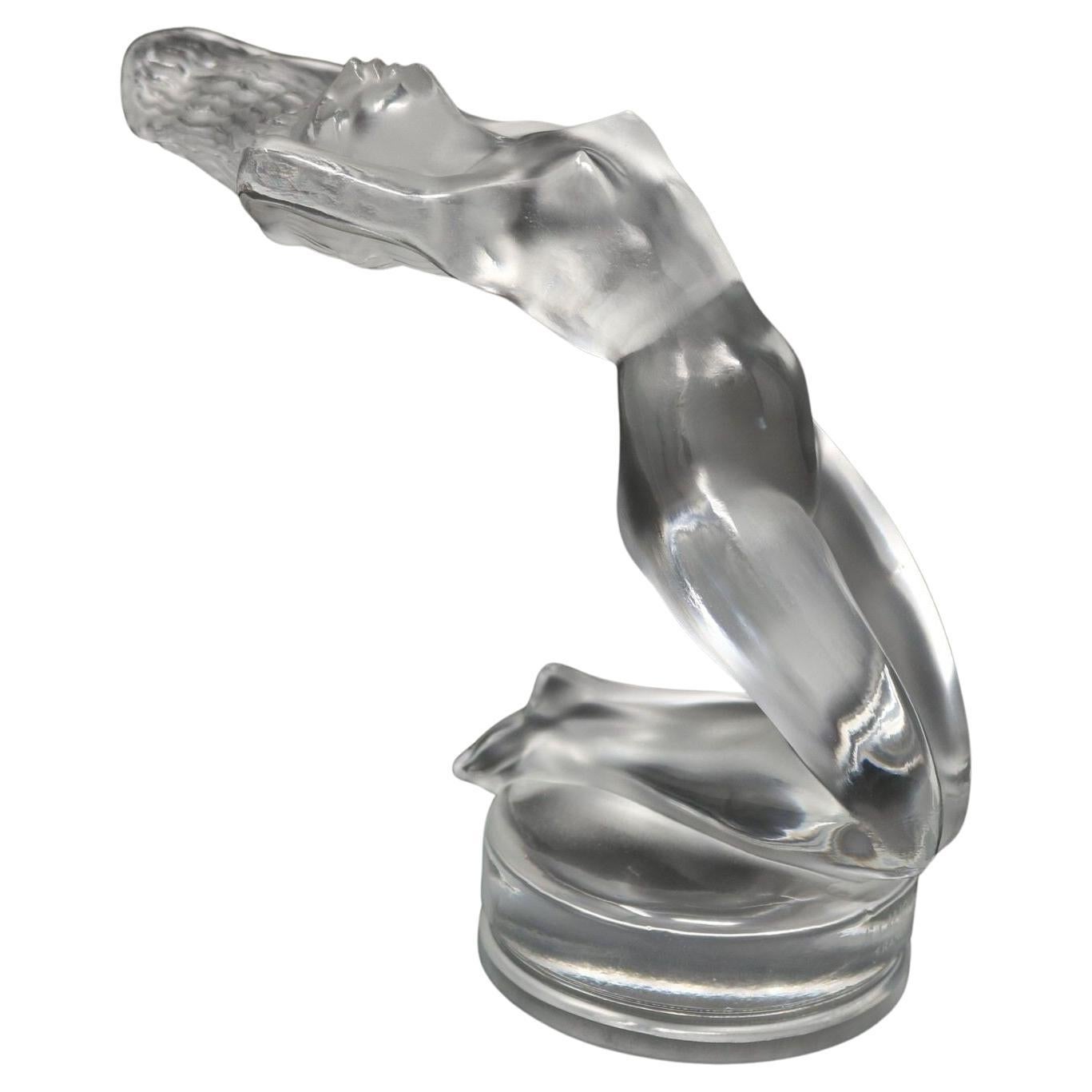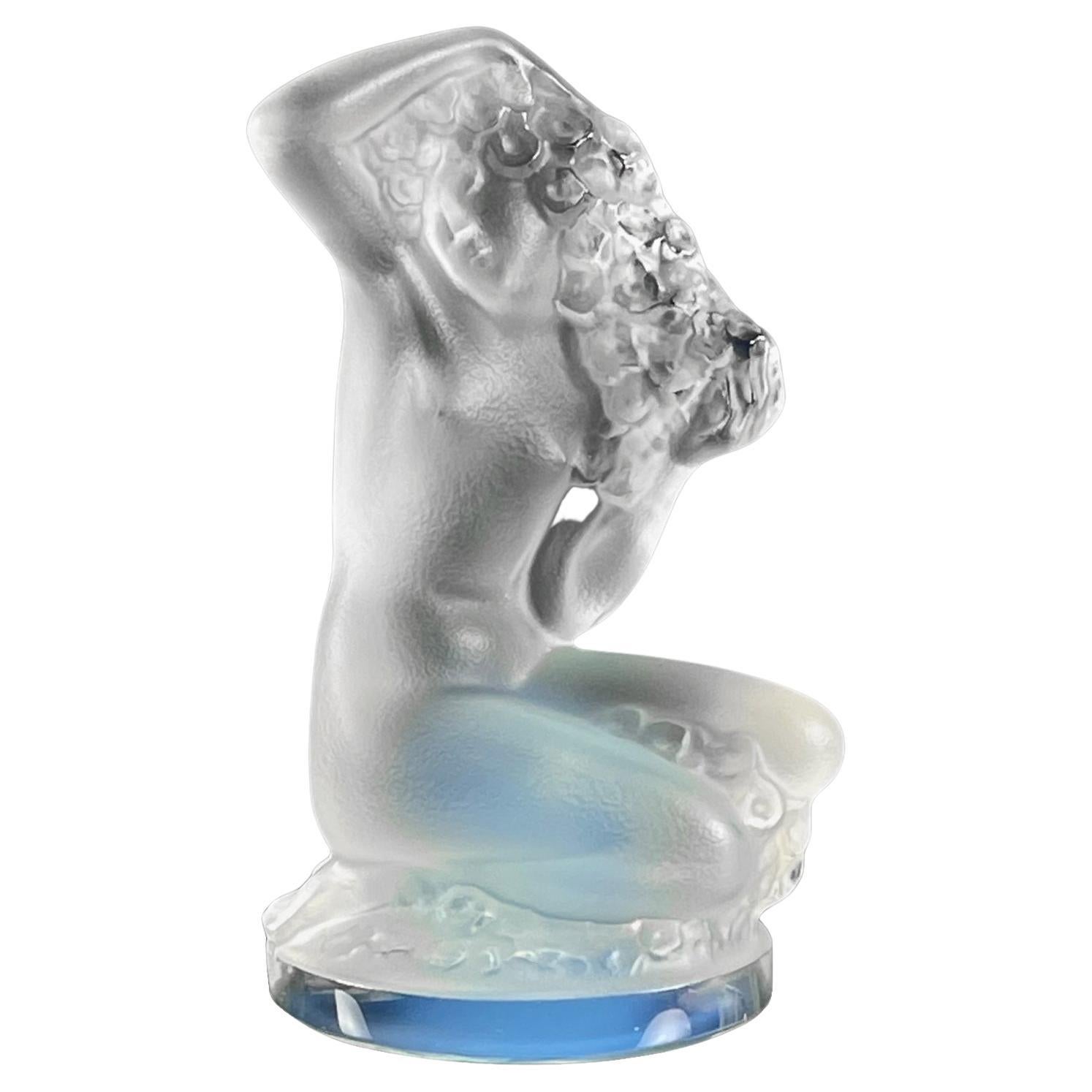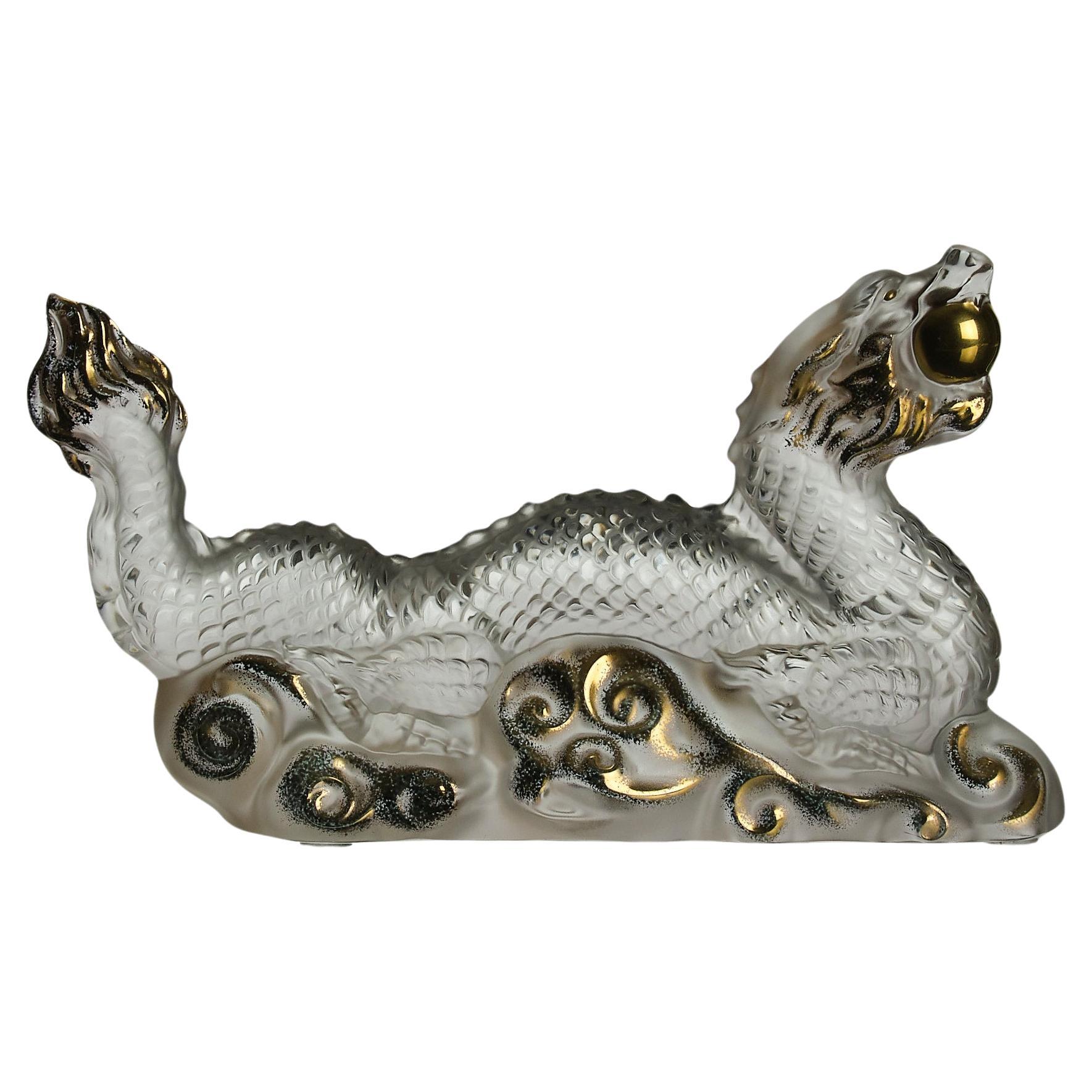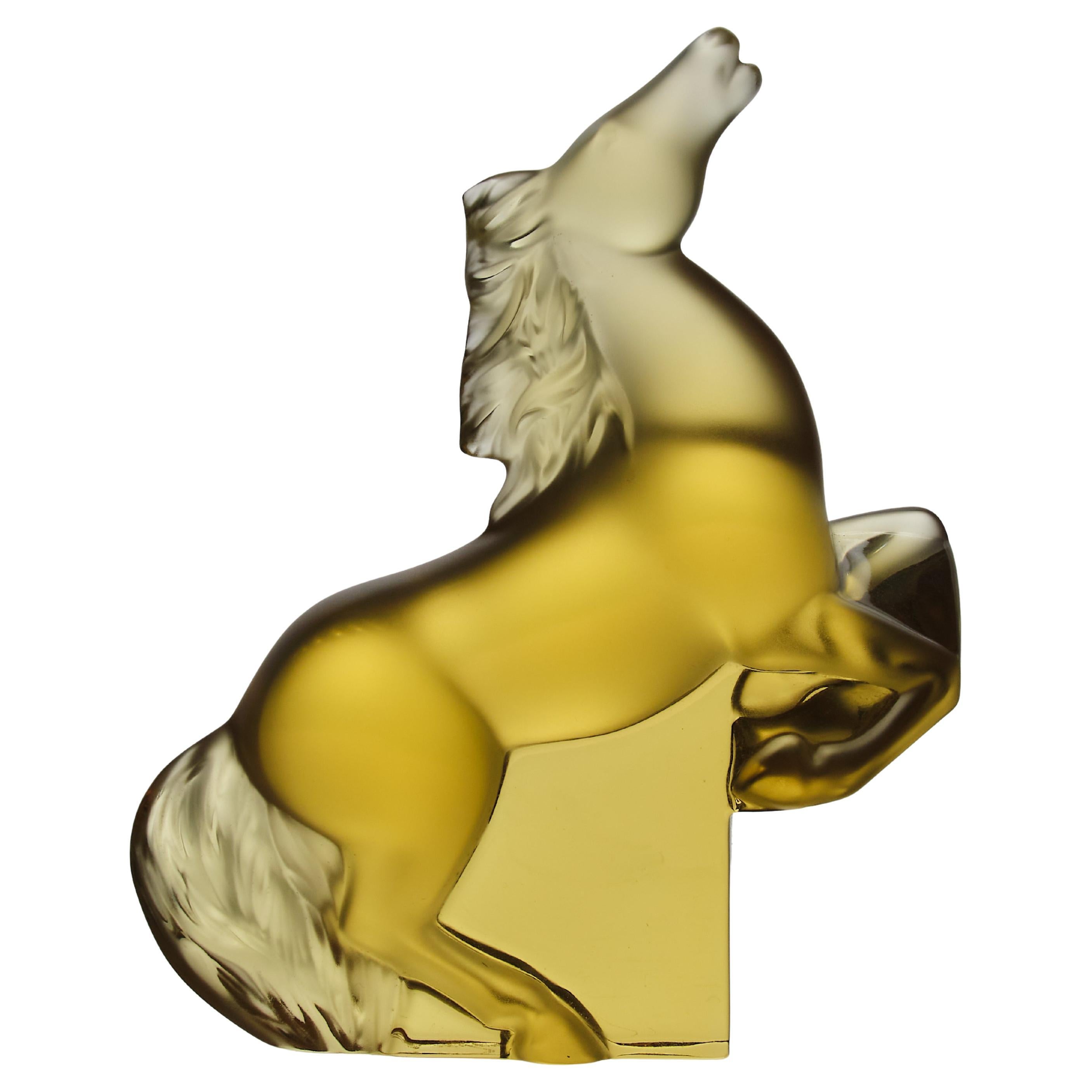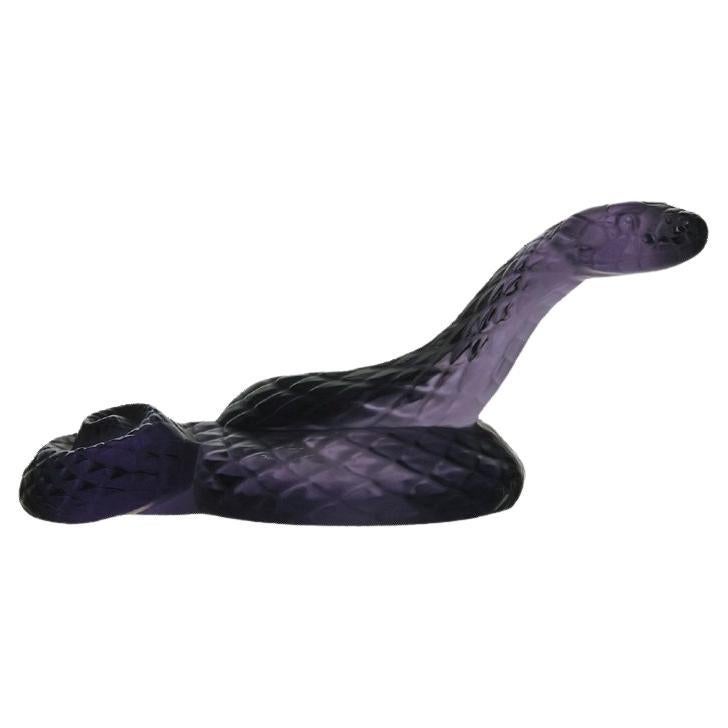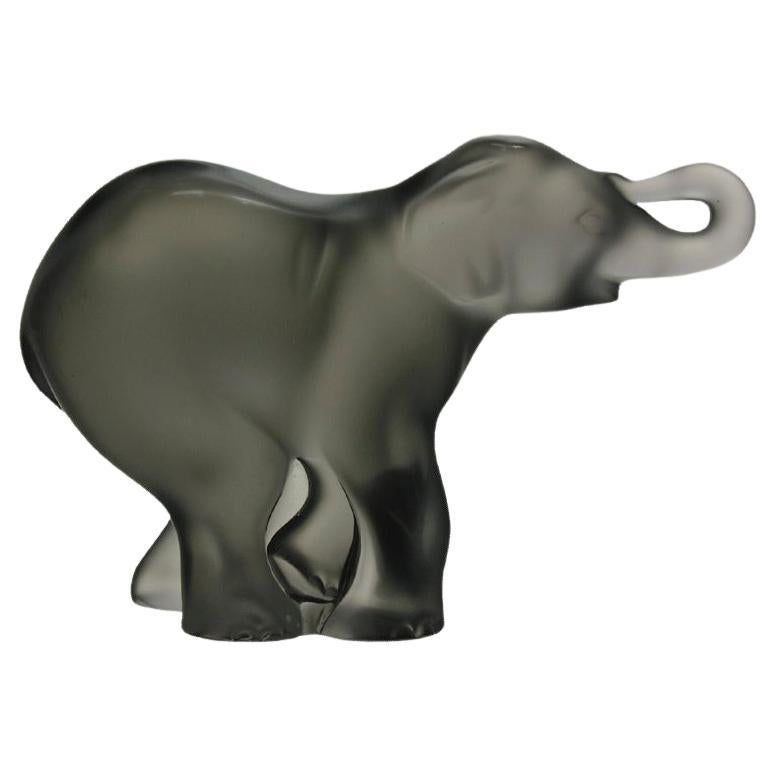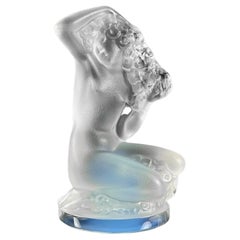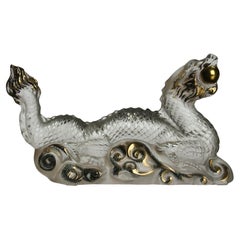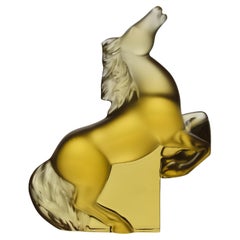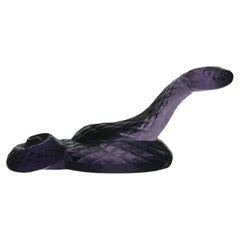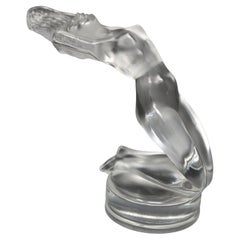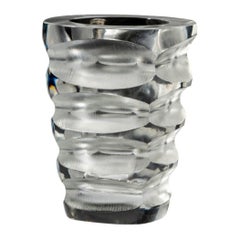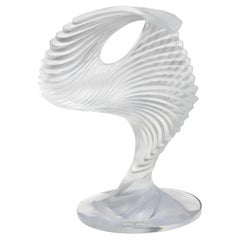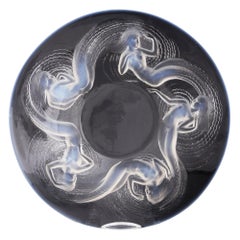Items Similar to Mid-20th Century Frosted Glass Scorpion by Marc Lalique
Want more images or videos?
Request additional images or videos from the seller
1 of 12
Mid-20th Century Frosted Glass Scorpion by Marc Lalique
$750.30
£550
€646.42
CA$1,050.77
A$1,155.20
CHF 597.14
MX$13,822.73
NOK 7,538.78
SEK 7,067.82
DKK 4,827.81
About the Item
A surprising frosted glass figure of a scorpion with its tail raised, ready to strike its prey. The frosted glass surface with excellent hand finished detail, signed Lalique France
Additional information
Measures: Height: 7 cm
Condition: Excellent Condition
circa: 1950
Materials: Hand Finished Frosted Glass
SKU: 6008
DESCRIPTION
The Scorpion
Scorpions are creatures that belong to the class of arachnids, the subclass Dromopoda, and the order Scorpiones. In the world, there are between 1,700 and 2,000 species of scorpions organized in 13 taxonomic families.
Although there is a large number of species, only a minimum amount, approximately 35, are lethal to humans, particularly for people with health conditions, kids or seniors.
For some people, there is confusion about the official name assigned to these species. In several regions of Latin America, people refer to them as ‘alacranes,’ coming from the Arabic “al-ágrab” and in other places they are ‘scorpions,’ from the Latin “scorpio, omis,” but both denominations are correct and refer to the same animal.
Top Scorpion Facts
Top Scorpion Facts
There are approximately 2,000 species of scorpions, according to raw estimations.
Mothers can attack and eat their young when no other food is available.
More Facts about Scorpions…
According to scientists, these creatures have existed on Earth for more than 400 million years, but their evolutionary records still have many questions that need an answer. Their ancient history is a mystery, but some think that they come from aquatic animals slowly adapted to terrestrial life.
These arachnids, which sometimes are wrongly called insects, are characterized mainly by having two large and powerful pedipalps in the form of pincers and a long and structured tail with a stinger which they use to inject their venom. In addition to that, they have eight legs, chelicerae, exoskeleton and sensory hairs that adequately help them to survive in their hostile natural environment.
The sizes, colours, and shapes of the scorpion anatomy are so diverse that are difficult to generalise. They have red, yellow or black colours, and sizes so different that they range from less than 0.6 inches to 7.8 inches.
Some Scorpion Species
Arizona Bark Scorpion
Deathstalker Scorpion
Emperor Scorpion
Fattail Scorpion
However, their Size and colour do not tell us much about their danger or the level of toxicity of the poison they produce. Some believe that the large and black species are the most deadly, but curiously the small red or yellow are the ones that often cause the greatest health problems in humans. The Indian red scorpion (Hottentotta tamulus), the Arizona bark scorpion (Centruroides sculpturatus) or the Deathstalker (Leiurus quinquestriatus), are examples of scorpions that you should avoid.
Scorpions can adapt to a wide range of habitats from rainforests to arid terrains in places such as North America, Africa, and Asia, especially in India and the Middle East. They like to stay in dens, caves, trees and any place that provides them darkness and protection; they prefer to go unnoticed instead of drawing attention, thus avoiding predators and also have greater success in feeding.
- Creator:Marc Lalique (Artist)
- Dimensions:Height: 2.76 in (7 cm)Width: 0 in (0.01 mm)Depth: 0 in (0.01 mm)
- Style:Art Deco (Of the Period)
- Materials and Techniques:
- Place of Origin:
- Period:
- Date of Manufacture:1950
- Condition:Wear consistent with age and use.
- Seller Location:London, GB
- Reference Number:Seller: 60081stDibs: LU3216333502472
About the Seller
5.0
Vetted Professional Seller
Every seller passes strict standards for authenticity and reliability
Established in 1936
1stDibs seller since 2017
86 sales on 1stDibs
Typical response time: <1 hour
- ShippingRetrieving quote...Shipping from: London, United Kingdom
- Return Policy
Authenticity Guarantee
In the unlikely event there’s an issue with an item’s authenticity, contact us within 1 year for a full refund. DetailsMoney-Back Guarantee
If your item is not as described, is damaged in transit, or does not arrive, contact us within 7 days for a full refund. Details24-Hour Cancellation
You have a 24-hour grace period in which to reconsider your purchase, with no questions asked.Vetted Professional Sellers
Our world-class sellers must adhere to strict standards for service and quality, maintaining the integrity of our listings.Price-Match Guarantee
If you find that a seller listed the same item for a lower price elsewhere, we’ll match it.Trusted Global Delivery
Our best-in-class carrier network provides specialized shipping options worldwide, including custom delivery.More From This Seller
View AllMid-20th Century Frosted Glass Study Entitled "Floreal" by Marc Lalique
By Marc Lalique
Located in London, GB
An elegant mid 20th century frosted and opalescent glass figure of a naked kneeling lady with fine hand finished detail and good sky blue colour, signed Lalique France
ADDITIONAL INFORMATION
Height: 8 cm
Condition: Excellent Condition
circa: 1960
Materials: Opalescent Glass
SKU: 20011
ABOUT
Lalique Floreal
Originally designed by René Lalique this vibrant model of a seated Art Nouveau beauty with flowers in her hair was originally produced between 1942 and 1947 and later re-issued by Marc Lalique in clear and opalescent coloured crystal glass...
Category
Mid-20th Century French Art Deco Figurative Sculptures
Materials
Glass
Contemporary 21st Century Glass "Tianlong Dragon" by Lalique Glassworks
By Lalique
Located in London, GB
A dramatic clear and frosted glass study of an Orietnal dragonwith a ball within its mouth exhibiting very fine satin finish and excellent surface detail heightened with gilding, sig...
Category
21st Century and Contemporary French Modern Animal Sculptures
Materials
Glass
20th Century Frosted Glass Sculpture entitled "Cheval Kazak" by Lalique Glass
By Lalique
Located in London, GB
A fabulous mid 20th Century clear and frosted glass study of a rearing Kazak horse with very fine translucent amber colour and excellent hand finished detail, signed Lalique France ...
Category
20th Century French Modern Animal Sculptures
Materials
Glass
Limited Edition Contemporary Crystal "Glass Snake" by Lalique Glass
By Lalique
Located in London, GB
"Glass Snake" by Lalique Glass
A wonderful limited edition 21st Century French deep purple crystal glass study of a coiled snake with its head raised, wit...
Category
21st Century and Contemporary European Art Deco Animal Sculptures
Materials
Glass
Mid 20th Century Crystal Glass Sculpture entitled "Timori" by Marc Lalique
By Marc Lalique
Located in London, GB
An endearing mid 20th Century frosted grey glass study of a charming young elephant with excellent colour and fine tactile surface detail, signed Lalique France
ADDITIONAL INFORMAT...
Category
Mid-20th Century French Mid-Century Modern Animal Sculptures
Materials
Glass
20th Century Frosted Glass Sculpture Entitled "Standing Elephant" by Lalique
By Marc Lalique
Located in London, GB
Impressive Mid-20th Century clear and frosted glass figural study of an African elephant with its trunk raised. The surface with fine detail, signed Lalique France
Additional information
Height: 15 cm
Condition: Excellent Condition
circa: 1970
Materials: Clear & Frosted Glass
About
Lalique Glass
René Lalique (1860-1945) began his career as a jewellery apprentice at the age of 16, and by 1881 he was a freelance designer for many of the best-known Parisian jewellers. In 1885, he opened his own workshop on Place Gaillon in Paris, the former workshop of Jules Destape. In 1887, Lalique opened a business on Rue du Quatre-Septembre, and registered the "RL" mark the following year. In 1890, he opened a shop in the Opera District of Paris. Within a decade, Lalique was amongst the best-known Parisian jewellers.
In 1905, Lalique opened a new shop at Place Vendôme which exhibited not only jewellery, but glass works as well. It was close to the shop of renowned perfumer François Coty; in 1907, Lalique began producing ornate perfume bottles for Coty. The production of glass objects began at his country villa in 1902, and continued there until at least 1912. The first Lalique glassworks opened in 1909 in a rented facility in Combs-la-Ville, which Lalique later purchased in 1913. In December 1912, Lalique hosted an exhibition of Lalique Glass—as his glass would come to be known—at the Place Vendôme shop. During the First World War, the glassworks produced mundane items in support of the war effort. In 1919, work began on a new production facility in Wingen-sur-Moder, which opened in 1921. From 1925-1931, Lalique produced 29 models of hood ornaments; a mermaid statuette first produced in 1920 was also later sold as a hood ornament. During the 1920s and 1930s, Lalique was amongst the world's most renowned glassmakers.
René Lalique died in 1945. His son Marc Lalique took over the business, operating initially as "M.Lalique" and later as "Cristal Lalique...
Category
20th Century French Art Deco Animal Sculptures
Materials
Glass
You May Also Like
Rene Lalique Glass Chrysis Car Mascot
By René Lalique
Located in Chelmsford, Essex
Rene Lalique clear and frosted glass 'Chrysis' car mascot (radiator cap). Features a naked female figure, kneeling, with her head thrown back. In ancient Greece, Chrysis was the prie...
Category
Vintage 1930s Figurative Sculptures
Materials
Glass
Lalique Mortefontaine Glass Vase – France, Late 20th Century.
By Lalique
Located in Los Angeles, CA
Elegant Mortefontaine glass vase by Lalique, featuring a finely sculpted frosted and clear design. The graceful form and textural interplay exemplify Lalique’s mastery in blending Ar...
Category
Late 20th Century French Vases
Materials
Glass
Lalique Frosted Crystal Trophee
By Lalique
Located in West Palm Beach, FL
Lalique Frosted Crystal Trophee
Signed in Script, Lalique, France, and with Lalique label. Modeled in the abstract to represent a female dancer.
Height 13 in., Width 9 in., Diameter...
Category
20th Century Abstract Sculptures
Materials
Glass
Rene Lalique Calypso Coupe Ouvert, Designed 1930
By René Lalique
Located in Tunbridge Wells, GB
Rene Lalique Calypso Coupe Ouvert, Designed 1930
Additional Information:
Heading : René Lalique Calypso coupe ouvert
Date : Designed 1930
Origin : Wi...
Category
20th Century French Art Deco Decorative Art
Materials
Glass
René Lalique "ROITELETS" Signed R. Lalique France, Marcilhac 1065
By René Lalique
Located in West Palm Beach, FL
René Lalique (1860-1945)
"ROITELETS" GLASS VASE, MARCILHAC NO. 1065
stencil signature R. LALIQUE FRANCE
clear and frosted glass
Measures: Height 11.25 in x Diameter 6.75 in.
H...
Category
Vintage 1930s Vases
Materials
Glass
$5,200 Sale Price
20% Off
Rene Lalique Clear & frosted Tete d'epervier C1928
By René Lalique
Located in Devon, GB
Rene Lalique Clear & frosted Tete d'epervier (hawks head) highlighted with grey staining
Moulded mark to the back of the head Lalique France
The condition is very good with no damage...
Category
Vintage 1920s French Art Deco Glass
Materials
Glass
More Ways To Browse
Mid Century Frosted Glasses
Lalique Frosted
Lalique Frosted Glass
Scorpion Sculpture
Metal Owl
Cat Sculpture Italian
Elephant Figurine
Hand Carved Wood Eagles
Hand Carved Wood Elephants
Mallard Duck
Sculpture Rhino
Shepherd Dog
Antique Bird Sculpture
Czechoslovakia Porcelain
Silver Bird Sculpture
Vintage Bear Figurine
Antique Black Cat
Brass Owls
